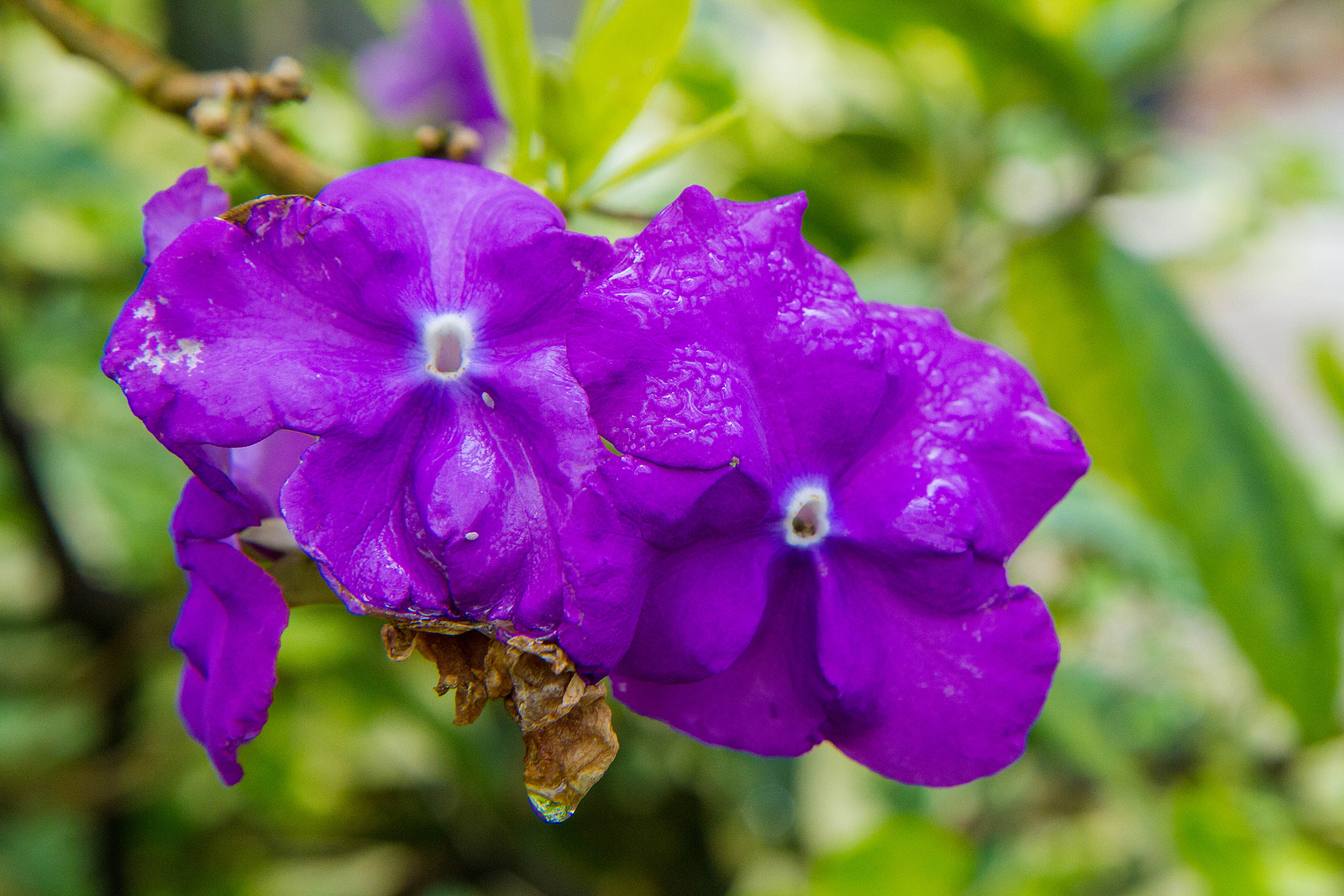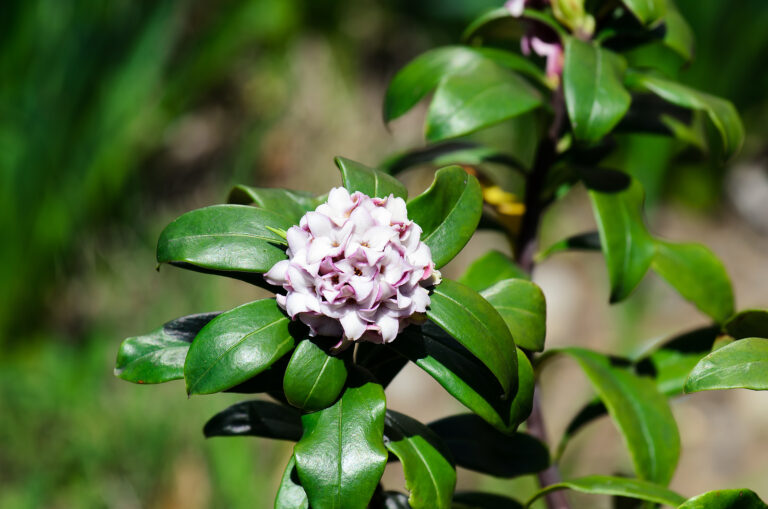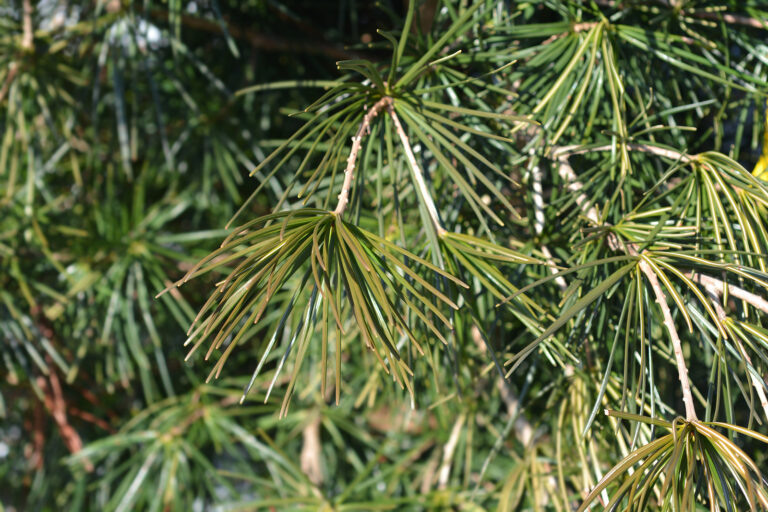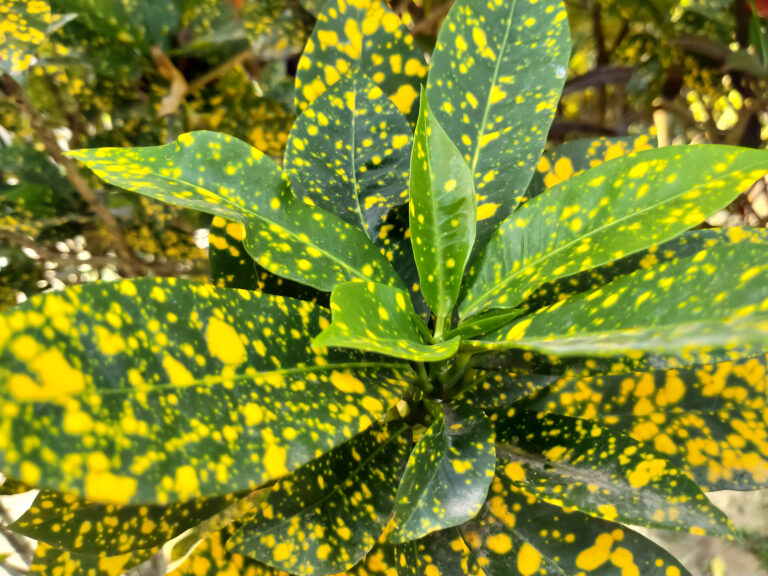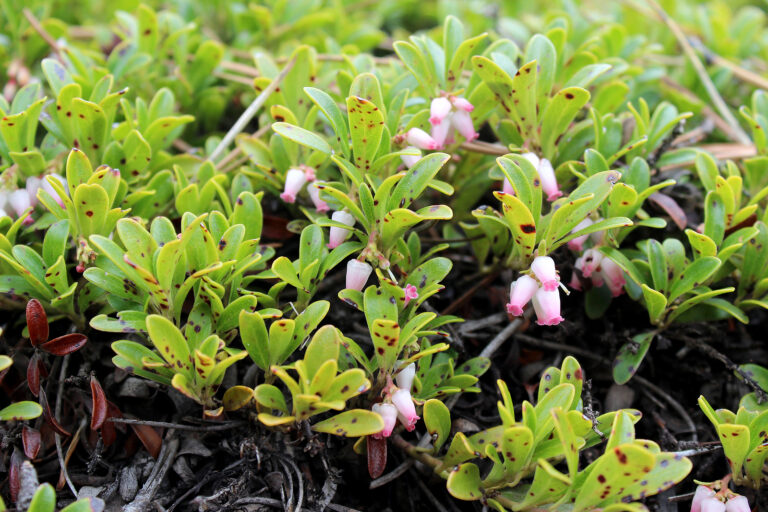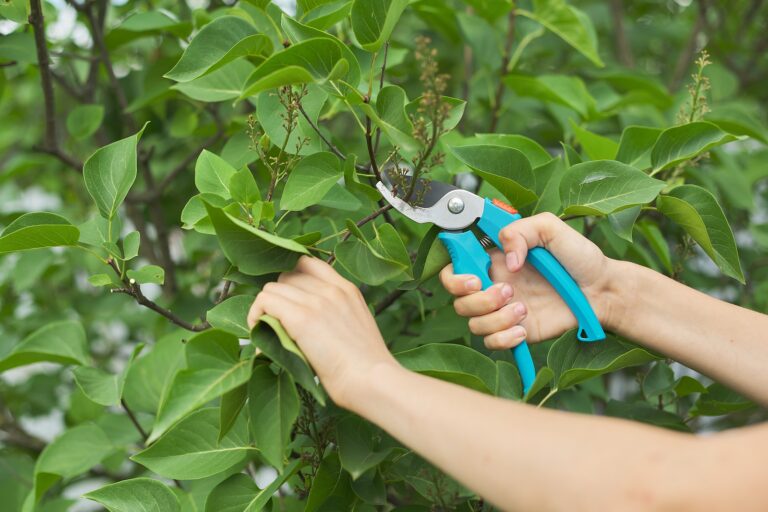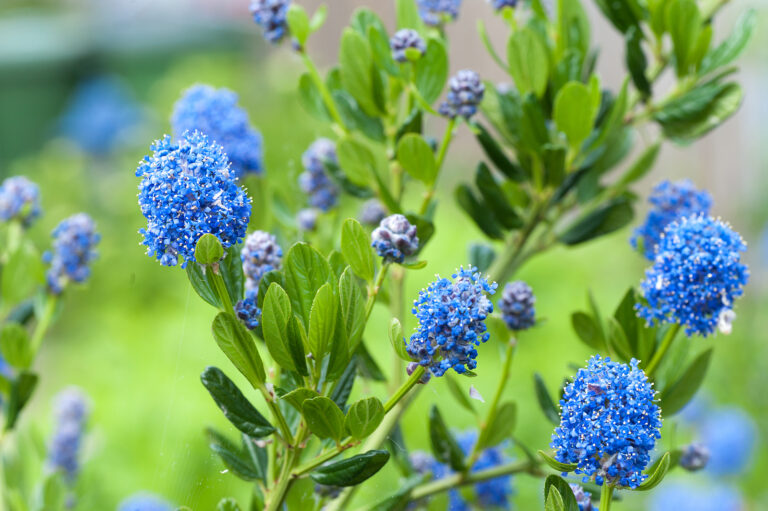How to Grow Brunfelsia — Yesterday, Today, and Tomorrow
Brunfelsia, commonly called Yesterday-today-and tomorrow, is grown for its handsome foliage and flowers that change color from the time they open until they drop. Blossoms open purple (“yesterday”), then fade to lavender (“today”), and then fade again to white (“tomorrow”).
Brunfelsia can be grown indoors and out but they require some pampering. They want humus-rich soil that stays moist but is well-drained. They require regular feeding. They grow best in full sun with mid-day shade. Brunfelsia must be planted in warm locations; they will lose most of their foliage if chilled.
Indoors, give Brunfelsia bright indirect light. Water lightly in winter, then resume feeding and repot if needed in late winter.
Brunfelsia is a genus of about 40 species of evergreen shrubs and small trees native to the tropical Americas. The genus includes only one species, B. pauciflora, that is widely grown by gardeners, indoors and out.
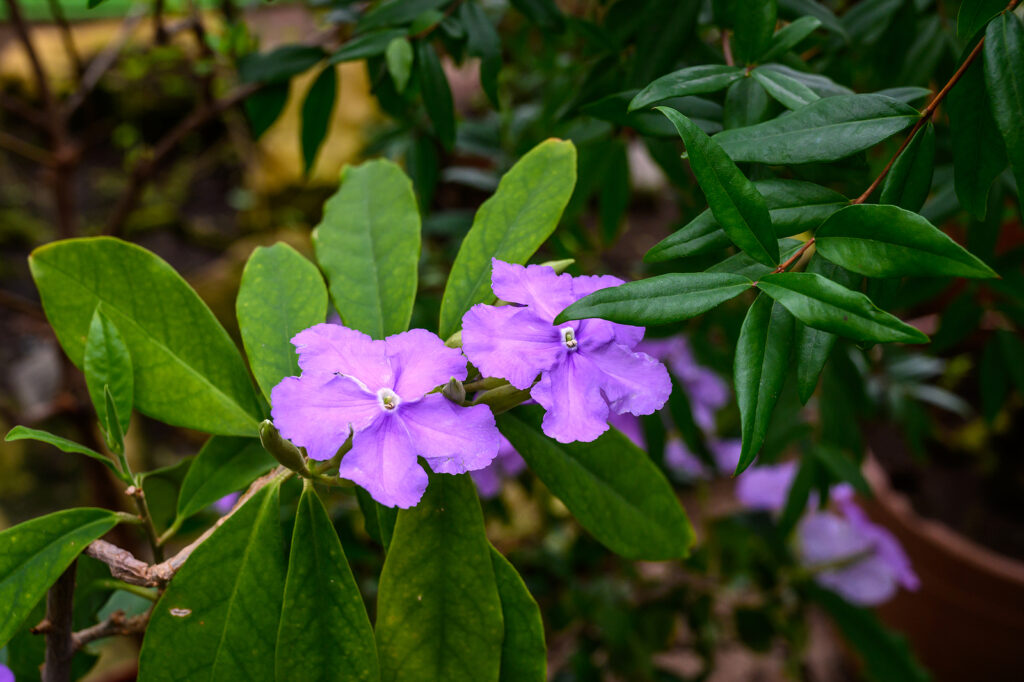
Get to know Brunfelsia
- Plant type: Evergreen shrub
- Growing zones and range: Zones 9 to 12
- Hardiness: Will be damaged by frost; where not hardy grow in a greenhouse
- Height and width: 3 to 10 feet (1-3m) tall and 1.5 to 5 feet (.5-1.5m) wide
- Foliage: Alternate, simple leaves are ovate, oblong, or spoon-shaped
- Flowers: White-throated, rich dark purple tubular flowers opening to a flat disk;
- Bloom time: Spring and early summer
- Uses: Grow where flowers can be admired. Good in containers; can also be grown in a greenhouse.
- Common name: Yesterday, today, and tomorrow
- Botanical name: Brunfelsia
- Family name: Solanaeae
- Origin: North, Central, and South America
Where to plant Brunfelsia
- Plant Brunflesia in full sun, some midday shade is desirable.
- Grow Brunfelsia in humus-rich, moist but well-drained soil.
When to plant Brunfelsia
- Set outdoors
Planting and spacing Brunfelsia
- Space Brunfelsia 3 to 10 feet (1-3m) apart.
How to water and feed Brunfelsia
- Water Brunfelsia regularly; keep the soil moist but not wet.
- Fertilize Brunfelsia with a balanced liquid fertilizer every 3 to 4 weeks during the growing season.
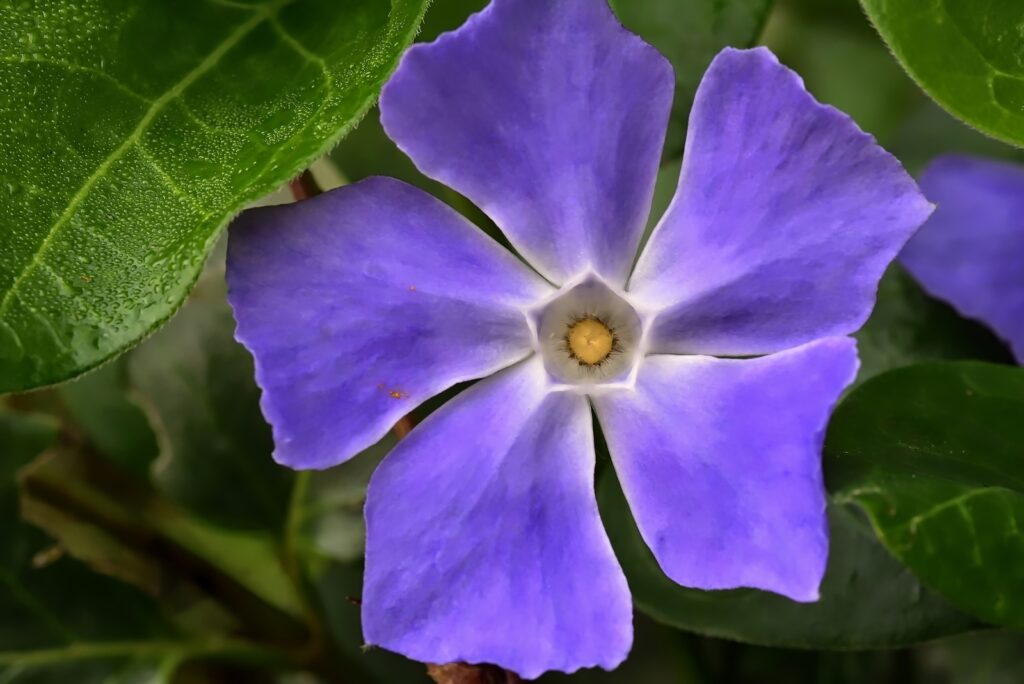
Brunfelsia care
- Pot on or top dress Brunfelsia in late winter.
- Pinch out stem tips of young plants to promote branching.
- Brunfelsia can be pruned in spring to improve shape or to restrict size.
- Prune in spring to remove scraggly growth and to shape.
Growing Brunfelsia as a houseplant
- Brunfelsia needs cool temperatures in winter and will grow in cool or average temperatures in spring through fall.
- Light should be bright; humidity should be average.
- Pot Brunfelsia in an extra-rich growing medium and keep it evenly moist.
- When Brunfelsia stops blooming, usually in late spring, reduce water and cut the plant back if necessary to keep it compact.
- The prunings can be used to root new plants.
Brunfelsia pests and diseases
- Brunselsia is usually not bothered by pests or diseases.
Brunfelsia propagation
- Sow seed in containers in a cold frame in early spring.
- Propagate from softwood cuttings in spring or summer.
Brunfelsia varieties to grow
- Brunfelsia australis, Yesterday-today-and-tomrrow. Broad leaves and 1.5 inch flowers that are deep blue the first day, lighter colored the secon day, and white the third day.
- B. pauciflora. Formerly B. calycina. Yesterday, today, and tomorrow. Common name comes from quick color change of blossoms: purple (“yesterday”), lavender (“today”), white (“tomorrow”). Bushy shrub ranges in height from 3 to 30 feet and half as wide. Dark green oval leaves are 3 to 6 inches long, leathery, and glossy. Cymes of pansy-shaped flowers, 2 inches across, with five wavy petals appear in spring and summer. Blossoms open purple, fading to lavender and then white. Established plants growing in the ground can survive temperatures into the 20Fs (Zone 9) but will be defoliated.
- ‘Eximia’ (B. calycina eximia). Somewhat dwarfed, compact version of ‘Floribunda’ with smaller flowers. A widely planted variety.
- ‘Floribunda’. Yesterday-today-and-tomorrow.S preading habit grows to 10 feet or more with several stems from base, but can be held to 3 ft. by pruning. Flowers, several in a cluster and each flaring to 2 inches wide, profusely displayed all over plant. Oval leaves, 3 to 4 inches long, dark green above, pale green below.
- ‘Macrantha’ (B. floribunda ‘Lindeniana’, B. grandiflora) Has fewer but larger flowers than ‘Floridbunda’; flowers are 2 to 4 inches across; also larger leaves, to 8 inches long, 2 ½ inches wide.

